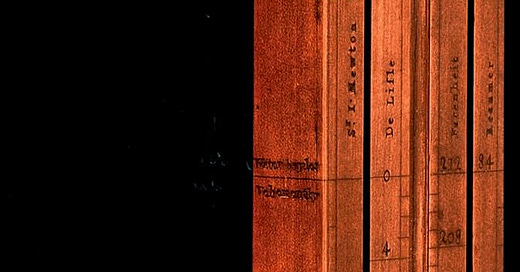My Number 1 Epistemology Book Recommendation: Inventing Temperature
Getting The Right Feel for Epistemology
In my last post, I wrote that no resource out there exactly captured my model of epistemology, which is why I wanted to share a half-baked version of it.
But I do have one book which I always recommend to people who want to learn more about epistemology: Inventing Temperature by Hasok Chang.
To be very clear, my recommendation is not just to get the good ideas from this book (of which there are many) from a book review or summary — it’s to actually read the book, the old-school way, one word at a time.
Why? Because this book teaches you the right feel, the right vibe for thinking about epistemology. It punctures the bubble of sterile non-sense that so easily pass for “how science works” in most people’s education, such as the “scientific method”. And it does so by demonstrating how one actually makes progress in epistemology: by thinking, yes, but also by paying close attention to what actually happened.
It works first because the book is steeped in history, here the history of thermometry (the measurement of temperature). By default, beware anything that is only philosophy of science, without any basis in history — this is definitively ungrounded bullshit.
Not only is Chang leveraging history, he also has an advantage over most of the literature in History and Philosophy of Science: early thermometry is truly not that complex technically or mathematically. Except for the last historical chapter, where details of the Carnot cycle get in the way, most of the book describes straightforward questions that anyone can understand, and both experiments and mathematics are at a modern high-school level.
As such, I know that any educated person can read this book, and follow the history part.
Last but not least, thermometry provides a great opportunity to show what happens at the beginning, before all the frames and techniques and epistemic infrastructure is set up.
Another source of oversimplification in people’s models of epistemology (including my own before I started digging into the history) is that we moderns mostly learn well-framed and cleaned up science: when we learn Classical Mechanics, we don’t just learn it as Newton created it, but we benefit from progress in notations, mathematics, and even the whole structure of physics (with the emphasis on energy over forces).
This, I surmise, has the unfortunate consequence of making even practicing scientists feel like science and epistemology is cleaner than it truly is. Sure, we get that data is messy, and that there are many pitfalls, but for many, the foundations have been established before, and so they work in a well-defined setting.
But at the start of thermometry, as in the start of every epistemological enterprise, there was almost nothing to rely on.
For example, if you want to synchronize different temperature measuring devices (not even thermometers yet, because no scale), a natural idea is to find fixed points: phenomena which always happen at the same temperature.
But then… if you don’t even have a thermometer, how can you know that fixed points are actually fixed?
And even if you can do that, what if your tentative fixed points (like the boiling point of water) are not one very specific phenomenon, but a much complex one with multiple phases, over which the temperature does vary?
These are the kind of questions you need to deal with when you start from nothing, and Chang explores the ingenuity of the early thermometricians in teasing imperfect answer out of nature, iterating on them, and then fixing the foundations under their feet. That is, they didn’t think really hard and get everything right before starting, they started anyway, and through various strategies, schemes and tricks, extracted out of nature a decently reliable way to measure temperature1, operationalizing the concept in the same stroke.
That’s one of the feel I was talking about: the idea that when you don’t have the strong basis of an established discipline (or the wealth of epistemic regularities afforded by classical physics), you need to be much more inventive and adventurous than the modern “scientific method” would let you believe.2
Of course, I’m not saying that this book teaches you everything that matters.
First, it’s about physics, and classical physics at that, which means it relies on many epistemic regularities which are just not present for most human endeavors.3 So it won’t be giving you the right feeling for hunting for epistemic regularities, and noticing the ones that are missing — most of the big ones are there for the thermometry people.
And maybe more important, although the book demonstrates and explores key concepts of epistemology, such as epistemic iteration, it doesn’t try to provide a method for epistemology in general, adapted to various circumstances and contexts.
For that goal, I know no alternative to reading widely and thinking deeply to come up with your own model (not quite here yet myself, but moving in this direction).
But to bootstrap your epistemological journey, Inventing Temperature is definitely a great choice.
It’s reliable, but it’s not simple. If you want some fun today, go read about the 14 fixed points used for the modern ITS-90 scale, as well as the various polynomials of degree 9, 12, 15 that are used in interpolating between these.
Another great reference on this is Rock, Bone, and Ruin by Adrian Currie, which focuses on historical sciences (evolutionary biology, archeology, geology…), and the methodological omnivore regime that these require.
See my model of epistemology for more intuitions and details on why that is.




